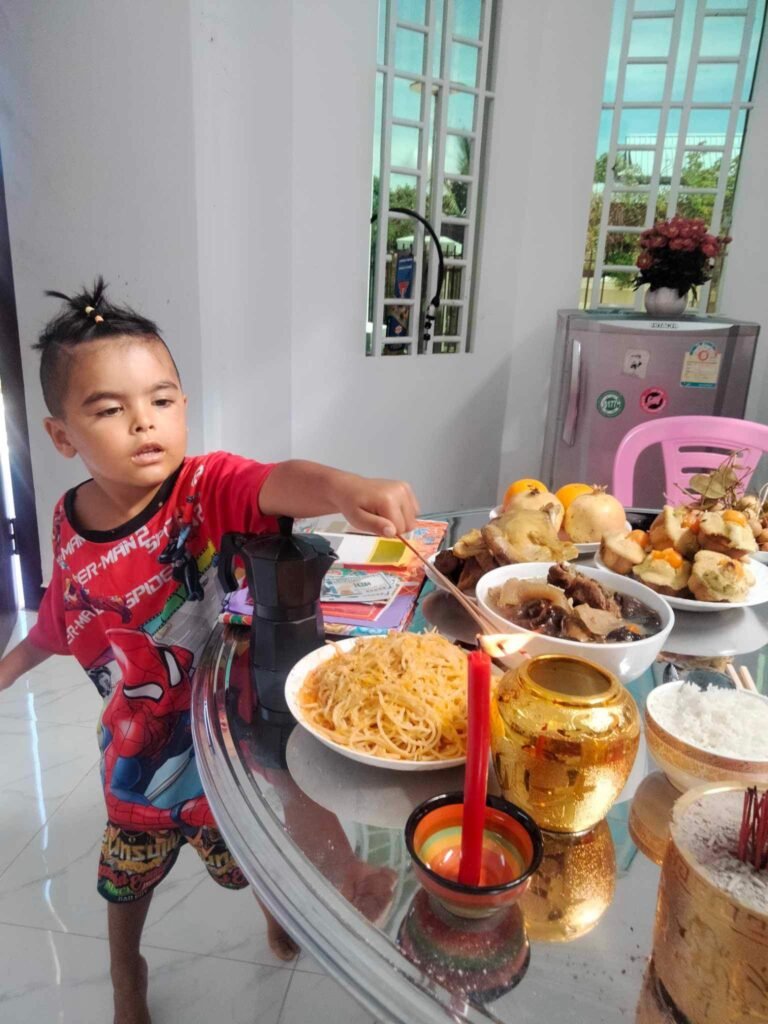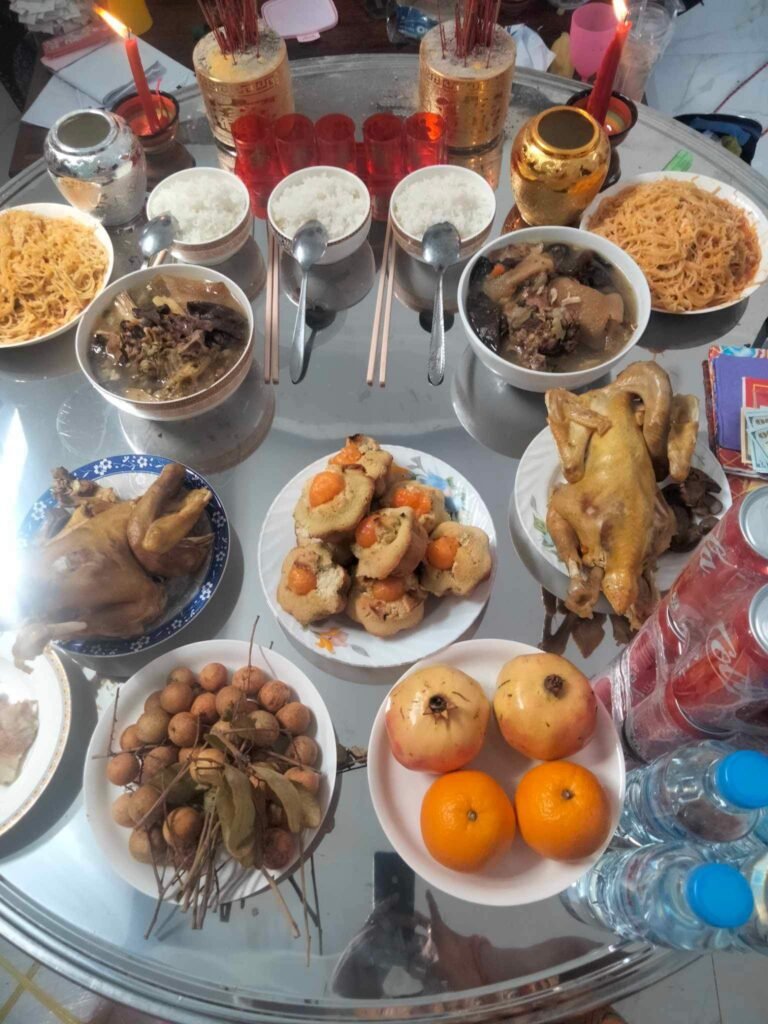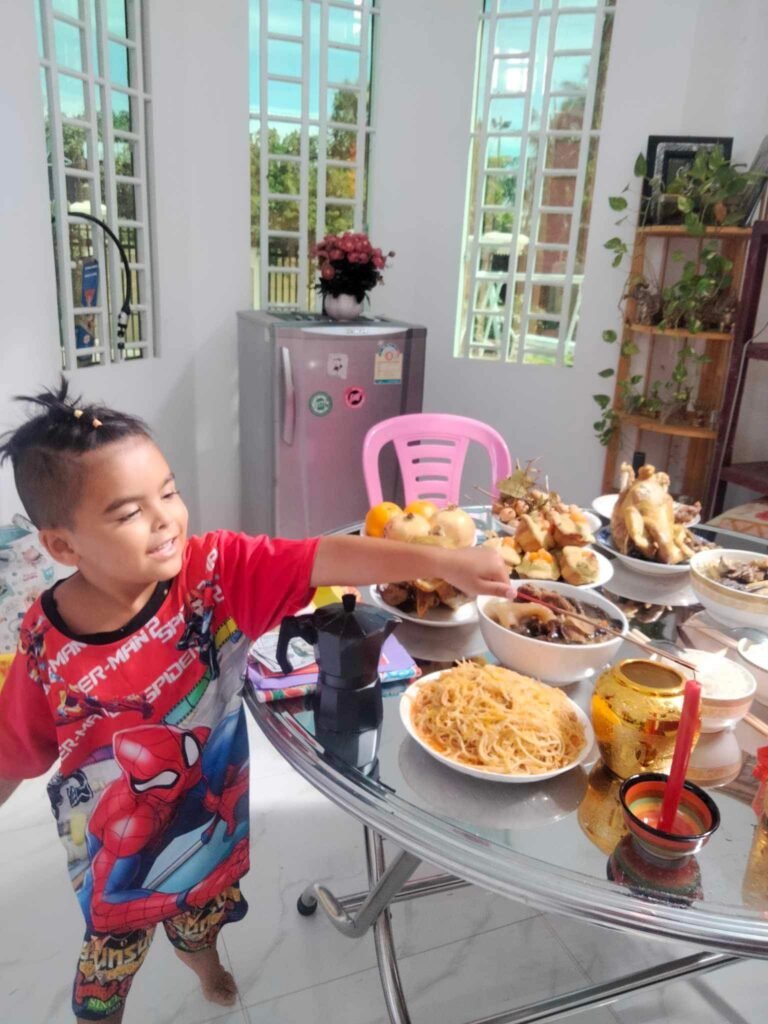In Cambodia, where many families bear Chinese heritage, a cherished tradition known as the Hungry Ghost Festival, or Sen Kbal Tek, takes center stage. This festival, with alternative names such as Zhongyuan Jie (中元節), Gui Jie (鬼節), or Yulan Festival, intertwines Chinese customs with the Khmer culture’s Pchum Ben festival. As we explore the legends and practices surrounding this event, we embark on a profound journey of compassion and remembrance.



The Legend of Maudgalyayana:
At the heart of the Hungry Ghost Festival lies the captivating story of Maudgalyayana, a devoted student of Buddha. With his attainment of the esteemed state of abhijñā, Maudgalyayana’s newfound powers led him on a quest to seek his deceased parents. During this spiritual odyssey, he encountered a poignant sight: his mother trapped within the realm of hungry ghosts.
Compelled by boundless compassion, Maudgalyayana ventured into the depths of hell, armed with a simple bowl filled with food offerings. He extended this sustenance to the hungry ghosts and his mother, hoping to alleviate their suffering. However, to his surprise, the food he presented transformed into scorching hot coal bricks before reaching their mouths.
Seeking guidance, Maudgalyayana turned to Buddha for assistance. The Buddha revealed that his mother’s sins were significant, necessitating the collective efforts of 1000 monks to make offerings on her behalf. Designating the 15th day of the 7th lunar month as an auspicious occasion, the Buddha emphasized the importance of abundant preparations, visually appealing displays, and the inclusion of fruits, incense sticks, and candles.
The Hungry Ghost Festival in Cambodia:
In Cambodia, the Hungry Ghost Festival weaves a tapestry of cultural significance, merging Chinese heritage with Khmer customs. As the festival day dawns, Cambodian families rise early to embark on a sacred ritual. Homes come alive with bustling preparations, as elaborate offerings take shape, and special versions of traditional dishes grace the tables.
Within each household, altars become adorned with carefully arranged fruits, vibrant flowers, and an array of incense sticks and candles. These offerings symbolize utmost respect and gratitude towards ancestors and wandering spirits, establishing a profound connection with the spiritual realm.
Cambodians believe that during this festival, the gates of hell open, allowing spirits to traverse the earthly realm. To appease these wandering souls, families engage in the ritualistic burning of joss paper, representing money and material possessions. Through these symbolic acts, they aim to provide comfort and sustenance to the spirits, ensuring their well-being in the afterlife.
The Hungry Ghost Festival in Cambodia is a testament to the harmonious coexistence of Chinese roots and Khmer traditions, representing the nation’s cultural diversity and shared heritage. It serves as a poignant reminder of the interconnectedness between different communities and provides an opportunity for individuals to honor and remember their ancestors. As we approach this auspicious occasion, let us embrace the spirit of compassion and remembrance, celebrating the vibrant tapestry that defines Cambodia’s cultural landscape.
Eileen McCormick and White Bindu